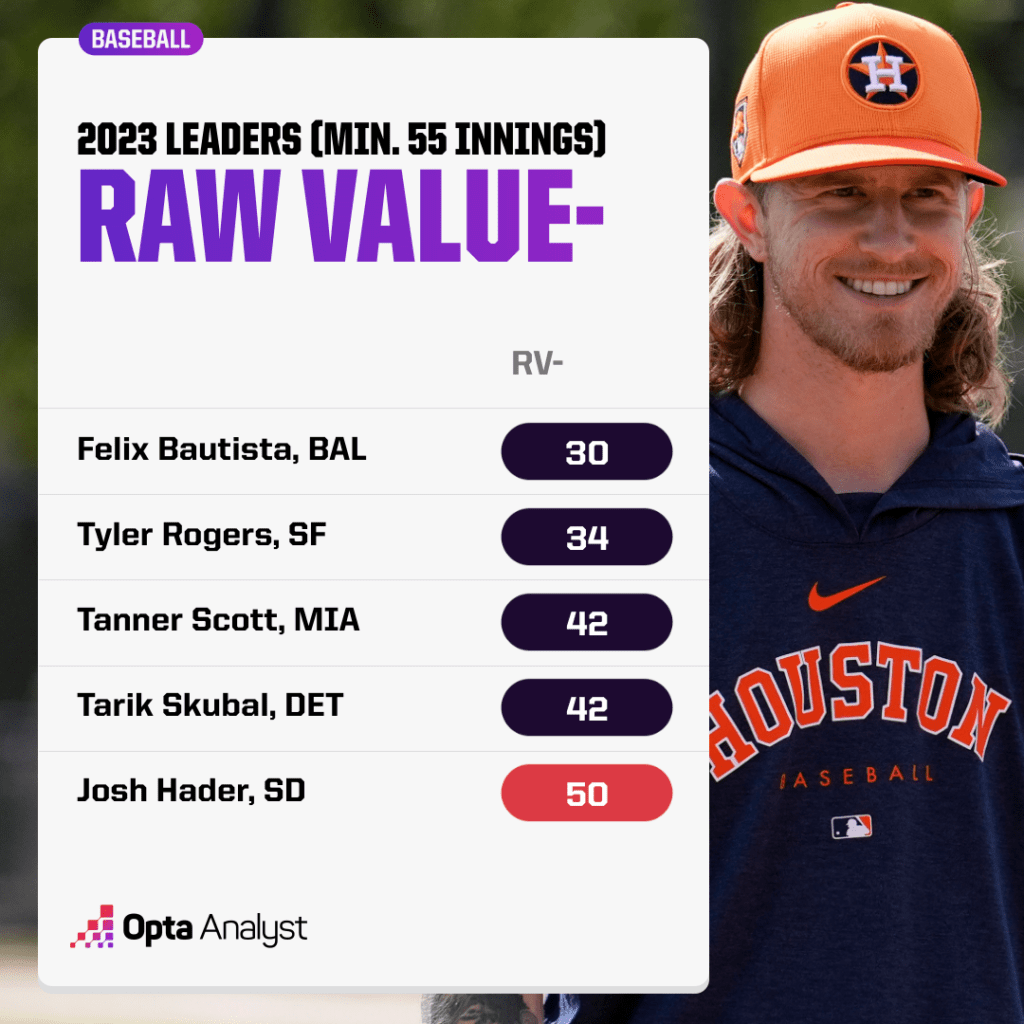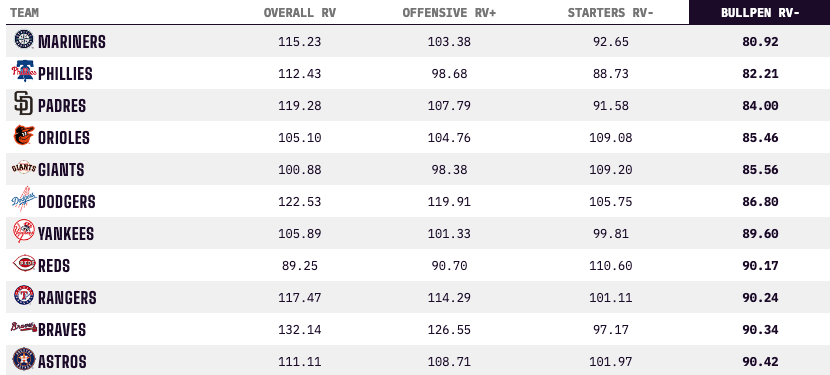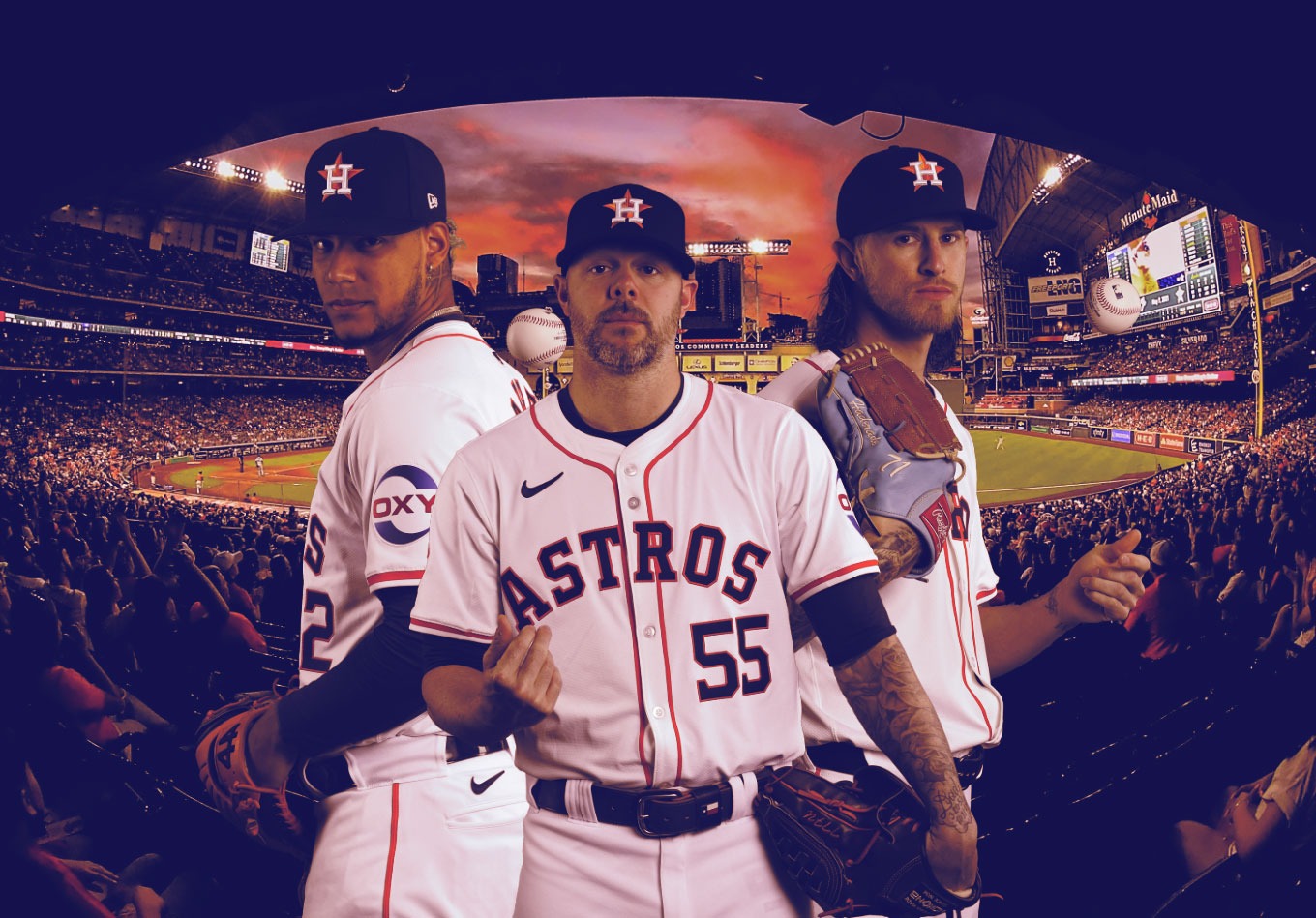After seven straight American League Championship Series appearances and six AL West titles in those seven years, the Houston Astros begin each season as kings of the castle.
Even in years like 2023, when doubts about the core’s longevity crept in and the Texas Rangers ultimately vanquished them in October, the road to the World Series has run through Houston.
Every year, observers and AL West rivals wonder if Houston’s iron grip on the AL will remain strong as Jose Altuve ages, Alex Bregman and Kyle Tucker creep closer to free agency and team owner Jim Crane largely avoids splashy signings, letting stars such as Carlos Correa walk.
So far, so good.
Still, count it as a data point that Crane and GM Dana Brown committed the largest free-agent deal in franchise history to a last line of defense this offseason, inking the star closer Josh Hader to a five-year, $95 million contract and stacking him atop preexisting bullpen stars Ryan Pressly and Bryan Abreu. It’s a team-building tactic that evokes the earliest days of their run – when Greg Holland and Wade Davis formed a super bullpen in Kansas City, when the New York Yankees were rolling out Aroldis Chapman, David Robertson and Dellin Betances.
The 2014 Royals were the first team in MLB history with two relief pitchers who logged ERA+ numbers of at least 150 and strikeout rates of 35% or better. The Yankees quickly joined the club, matching it in 2015, 2017 and 2018. And then the Milwaukee Brewers did it in 2021 with Hader and Devin Williams. But the conventional wisdom around bullpen greatness has morphed a bit, broadened into more of an organizational priority than a matter of collecting two to three established superstars.
So what does a super bullpen even look like in 2024? And what does the Astros’ decision to snap up Hader say about their chances of maintaining AL dominance?
The Super Bullpen
There’s little doubt about this: Hader, Pressly and Abreu will enter the season as baseball’s most fearsome-looking bullpen trio. Among relievers with at least 150 innings over the past three seasons, the trio ranks sixth (Hader), 12th (Abreu) and 22nd (Pressly) in ERA+. And unsurprisingly, the projections see things similarly. FanGraphs’ depth charts project them for three of the 18 best ERA marks among relievers.
As closers go, there aren’t many with more bonafides than Hader. Flinging a 96 mph two-seam fastball from the left side and a diabolical 85 mph slider that allowed only a .132 wOBA in 2023 (fourth best among all pitches thrown at least 200 times), Hader has now logged two seasons with sub-1.50 ERAs in the past three years. Among pitchers with at least 200 innings since 2017, Hader’s 32.0 K-BB% ranks first, as he edges Mets closer Edwin Diaz in the metric that hints at overall pitching dominance.
He had a 158 whiff+ on his slider and a 153 mark on his two-seamer last season – both well above the 100 league average. And opposing hitters managed just a 48 and 69 BIP+ (measures damage done upon contact), respectively, on those pitches.

Displaced closer Pressly has been a steady force ever since the Astros snagged him in a trade with the Twins back in 2018 – racking up 276.1 innings and 107 saves with a 160 ERA+, plus 44.2 more innings in the playoffs with a sparkling 2.22 ERA. His calling card is a hard slider that he throws 39.7% of the time with a whiff+ of 129 and command+ of 111.
Abreu, the youngest and hardest-throwing of the bunch, has an eye-popping 1.84 ERA since the start of 2022, his first full season in the majors. He had the 16th-best RV- (60) in MLB among those with at least 55.0 innings in 2023 (Hader was fifth) and would close for almost any other team in baseball.
Suffice to say, if you reach the seventh inning tied with or trailing the Astros, it’s going to be a rough time. The urgency implied in signing Hader, though, hints at vulnerability elsewhere in Houston’s plan.
A bullpen doesn’t exist in a vacuum. It absorbs the innings the starting pitchers leave open. New manager Joe Espada, Houston’s longtime bench coach, will likely need to work his relief corps harder than Dusty Baker did in recent years.
Since 2021, no team has required fewer bullpen innings than the Astros. With a less settled starting rotation – at least to begin the 2024 campaign – the Astros probably won’t be able to maintain that status. Justin Verlander will begin the season on the IL, and J.P. France is behind schedule dealing with shoulder issues. Lance McCullers Jr. and Luis Garcia are out until at least the summer following surgeries. Cristian Javier and Hunter Brown have shown plenty of promise and will be counted upon, but they have thus far been 150-inning arms, not 200-inning workhorses a la Framber Valdez.
That situation is far from bleak, but it spells out the need for a strong bullpen to soak up more important innings. The Astros will have stiff competition from within the division, too. The defending champs up in Arlington still have a lineup that could be among baseball’s best.
And even after the Hader signing, you could argue that the Seattle Mariners, not the Astros, are positioned to be the AL West’s top bullpen.
Keeping up With Seattle
Seattle led the majors in bullpen raw value- last season, and did so despite trading away closer Paul Sewald at the deadline. Their wide array of new or recently improved arms largely joined the organization in small trades or via waivers.
Pedigree doesn’t dictate results, and even without Sewald, the Mariners finished the season with four relievers – Andres Munoz, Matt Brash, Justin Topa and Gabe Speier – boasting RV- numbers of 75 or better. They also edged the Astros to take the top spot in another category in 2023: Innings by starting pitchers.
2023 Bullpen Raw Value- Leaders

The Mariners are demonstrating what might be the more common route to building a super bullpen in the 2020s. They excel at helping pitchers punch up their stuff and attack the zone. After turbocharging Sewald’s career by helping him understand the shape of his low-arm-angle fastball, they have turned around and repeated the feat for a procession of arms. Often, the difference between a good bullpen and a great one is finding a fourth or fifth excellent arm in a less conspicuous place than atop the free-agent market.
This is the danger the Astros perhaps sense. As the ammo from their once-loaded farm system dwindles in the wake of sign-stealing penalties and years of winning, more and more creativity will be required to maintain their footing.
In the heat of a tight race last summer, they reacquired Kendall Gravement as Rafael Montero, re-signed to a three-year deal last winter, saw his ERA balloon to 5.08 amid a homer-prone 2023. Now Graveman is injured and they will hope for a rebound from Montero.
Looking at the Astros’ pitching staff from this wider lens, Hader might not even fully backfill the relief arms the team lost this winter. Phil Maton (now with the Rays), Hector Neris (Cubs) and Ryne Stanek (still a free agent) combined for 185 strong to elite innings last season. Handing the ninth over to Hader means that Pressly and Abreu will be more available to pick up the high-leverage, but it won’t totally cover the gap.
To successfully safeguard their position atop the division, the Astros will need contributions from unproven arms like right-handers Brandon Bielak and Ronel Blanco, lefty Bennett Sousa or one-time top prospect Forrest Whitley.
The Impact in Houston
Predicting slippage from the Astros has been a great way to be wrong. But it will happen one day.
Signing Hader for five years certainly looks like Brown and Crane daring the world to doubt this team, and it does not seem advisable in 2024. The PECOTA system at Baseball Prospectus gives Houston the highest projected win total and best World Series odds of any AL team.
Beyond this season, the picture gets muddier, which makes the long-term commitment to Hader interesting. While the Astros did extend Altuve, they face the prospect of losing star third baseman Alex Bregman to free agency after this season, then ace Framber Valdez and two-time All-Star outfielder Kyle Tucker after 2025. There’s admittedly a lot of time left for Brown, an alumnus of the extension-happy Atlanta Braves front office, to work on those quandaries.
Yet Hader’s deal (and his eventual performance) will loom in the background of all these talks if the team balks at the price for everyday staples who form the foundation of the team’s success. A bullpen, after all, makes a bigger difference when there are more leads to preserve.
Perhaps there’s no long-term impact. Maybe Crane and company realize that preserving the Astros’ enviable position will eventually require a different approach to spending. Maybe Hader is the first sign of a shifting approach rather than a potential roadblock. Maybe he will be a crown jewel atop a pitching staff that also churns out surprise stars like Seattle’s pitching factory.
More likely, Hader and his two excellent setup men will be asked to plug a mighty hole, to help keep the Astros’ ship afloat with fewer reinforcements available than they are used to.
Why build the headliners for super bullpen? Because at this standard of excellence, maybe nothing else will do.
Check out our MLB and NBA coverage, and our college basketball picks. Follow us on X and Instagram for more!
